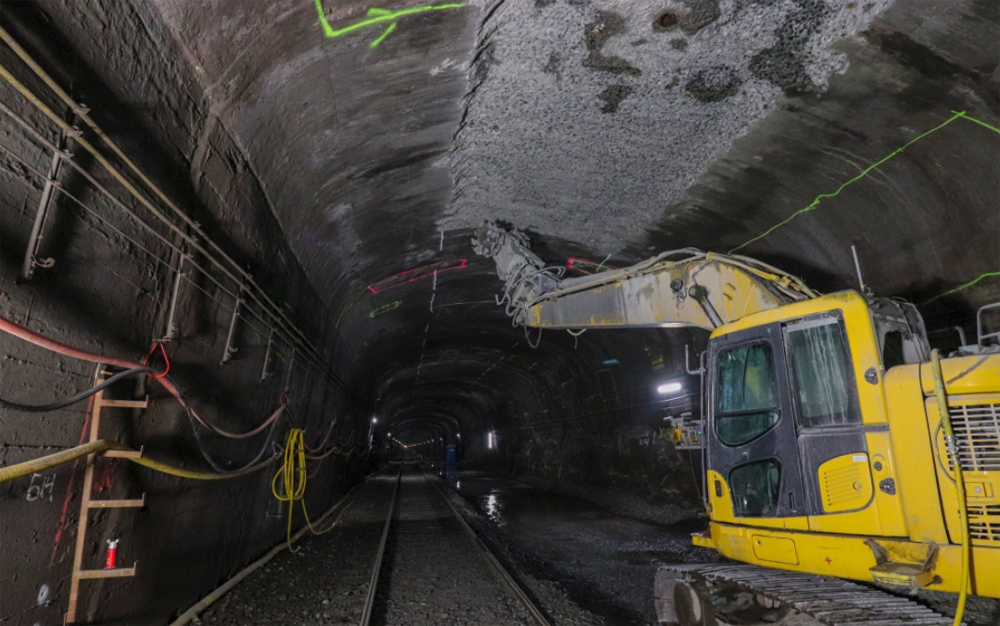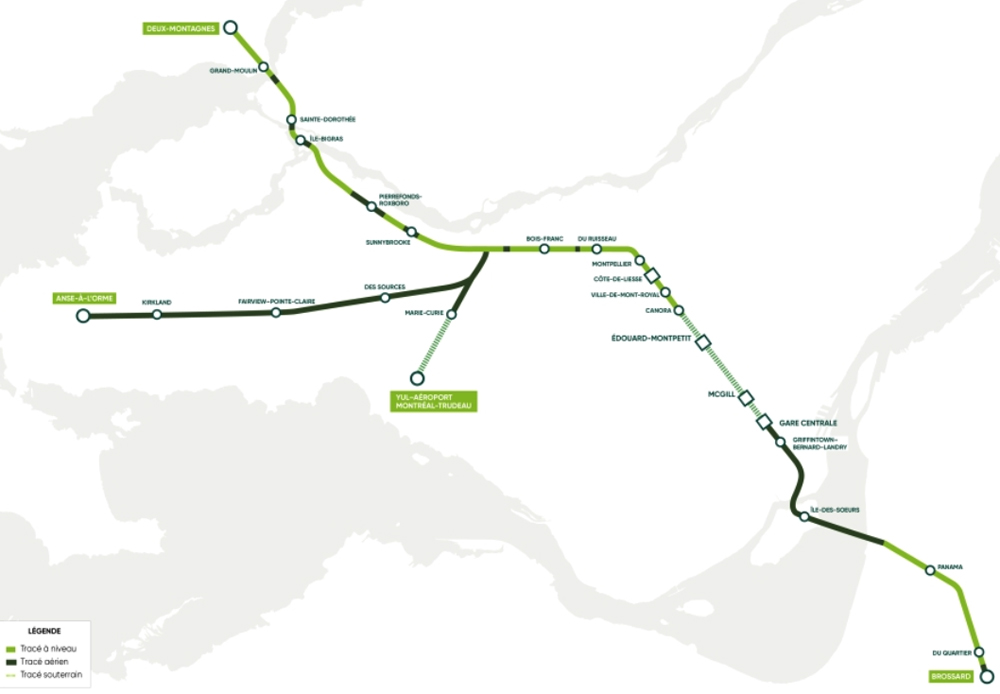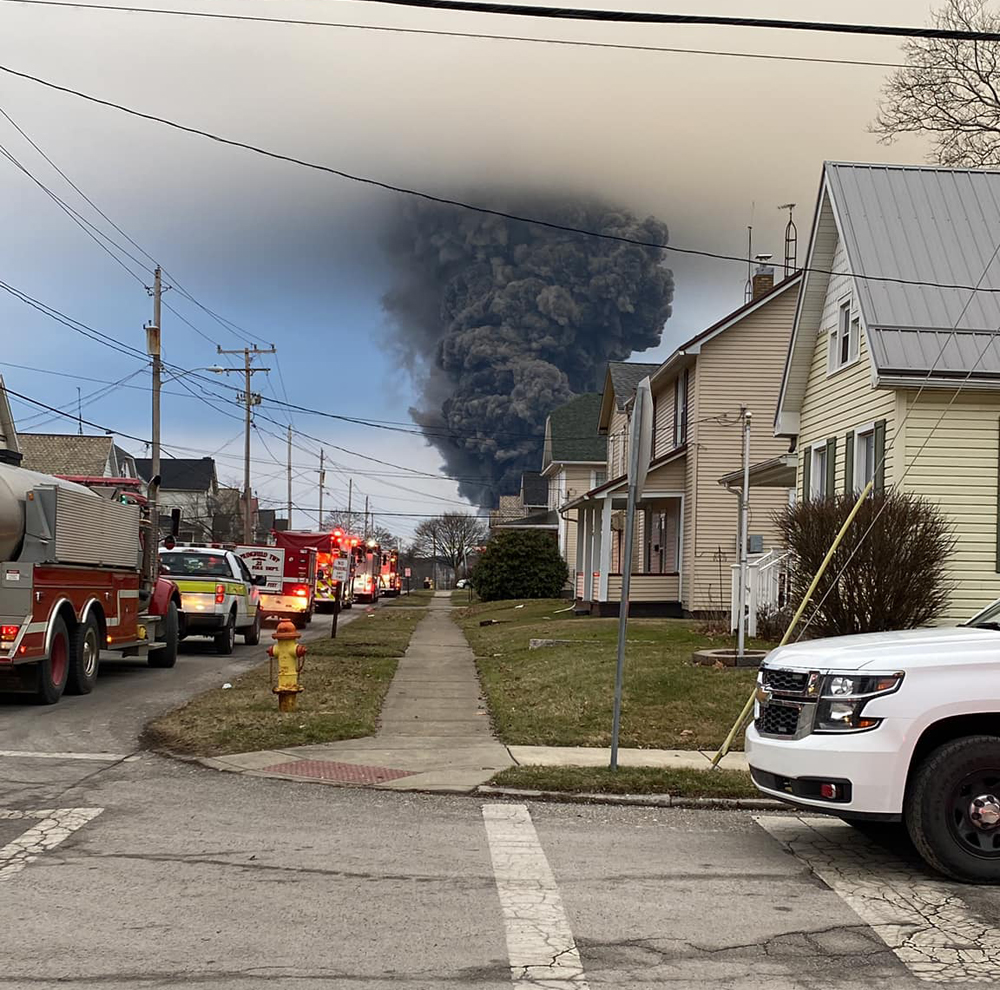
MONTREAL — Ongoing work in the Mount Royal tunnel will further delay completion of the Réseau express métropolitain light rail project, the private developers said today (Wednesday, April 24).
REM developer CDPQ Infra, the infrastructure arm of provincial pension manager Caisee de dépôt et placement du Quebec, said in an update posted today on the REM website that “the highly complex work to modernize the Mount Royal Tunnel is not quite finished and will continue. This means that testing of this segment will not be able to begin for the originally scheduled opening in late 2024 and will postpone the commissioning of the Deux-Montagnes and the Anse-à-l’Orme branches.”
The company is offering no estimate when service might begin. The Montreal Gazette reports CDPQ Infra President Jean-Marc Arbaud told a parliamentary hearing today that “it’s clear we’re targeting 2025, it won’t be 2024.” And project manager Julien Hurel told Radio-Canada, the French-language arm of the CBC, “Obviously, we have a plan. But giving a date today does nothing. Our commitment is to provide a safe and reliable rail system as quickly as possible.”
At one time, much of the system was targeted for a 2022 launch, but CDPQ infra has said issues ranging from the COVID-19 pandemic to the war in Ukraine have led to delays that pushed the target back to 2023, then late this year.. A 16.6-kilometer/10.3 mile, five-station segment of the 67-kilometer (41.6-mile), 26-station system opened last July [see “Montreal’s REM light rail makes debut,” Trains News Wire, July 29, 2023].
The delays are particularly frustrating for those on the planned Deux-Montagnes branch, who had commuter-rail service to downtown Montreal until the Mount Royal tunnel was closed in 2020 for its conversion to light-rail service. That closure was supposed to last for two years. As the Gazette notes, it now appears the tunnel project could take close to five years, nearly as long as the project to build the tunnel between 1912 and 1918.
Work still to be done in the tunnel includes installing bollards and sensors and installation of some 600 kilometers (more than 370 miles) of electrical cable.














